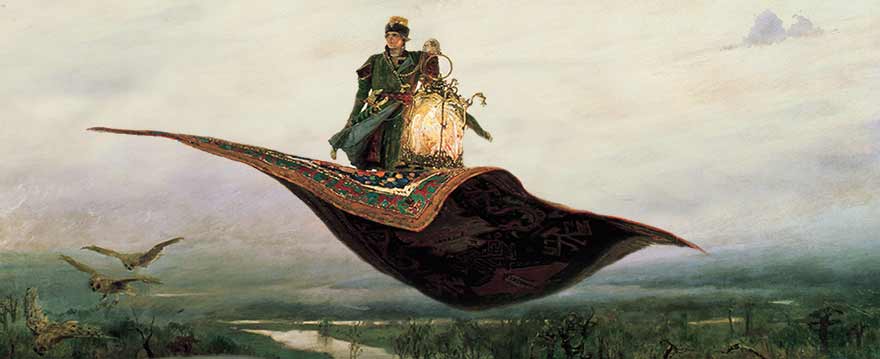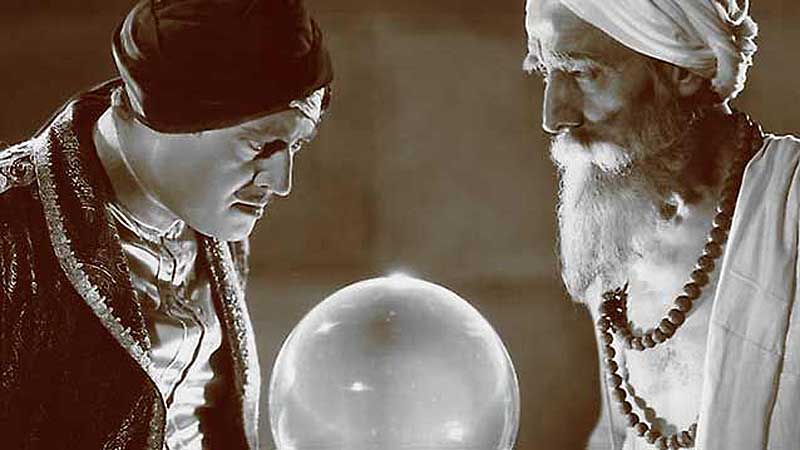
by Dr. Will Given
University of California, San Diego
Story Structure in Magic 101
In this article, we are going to examine the importance of structure when it comes to performance. To do so, we are going to base our discussion in a bit of philosophy and unpack us some Aristotle. Don't worry, this won't be too painful. In Poetics, Aristotle discusses the characteristics of a good plot and ranks completeness as where we need to start. He states that "a whole is something that has a beginning, a middle, and an end." Pretty simple, right? Of course, we all know that a story is comprised of a beginning, middle, and end, so, who cares? Why does this matter to us as performers?
Let's delve into this.
Think of your own magic show. Think of the last magic show you have seen. Think of that pandemic Zoom magic lecture you were so excited to pay good money for only to find the performer rambling on for hours and hours. Does a clear structure come to mind? Can you clearly identify the beginning? What about the end? Here, I am talking about the beginning and end in regard to the story you are wanting to tell and NOT about the performance itself – you cannot cheat and say the beginning of your show is when you take the stage and the ending is when you leave. (These are not the actual beginnings and endings of your show; this is something we will examine in a future article.) For the purposes of this article, we are talking primarily about STORY.
Chances are, your structure is apparent on a micro level (i.e. Trick 1 has a clear beginning/middle/end, Trick 2 has a clear beginning/middle/end, etc.), but not necessarily on a macro level – the journey you are hoping to take your audiences on as a whole. The structure of that journey is oftentimes missing in a lot of magic shows. The tricks, and here I would argue the magical effects themselves, or the "ta-da moments," are where way too much of our focus is put and we are not giving our audiences the goal or the destination we are heading towards. This is problematic. Our audiences sit and see a pastiche of perhaps only loosely connected vignettes. That can be confusing. It can be frustrating. It can be downright boring.
Imagine inviting a friend on a road trip and saying, "we are going to visit the Grand Canyon, and Graceland, and Zion, and Mount Rushmore, and Independence Hall, and Denali. Oh, and we are going to have beignets at Café du Monde." Most likely, your friend would have a lot of questions for you. How long is this going to take? What order are you going to visit all of these places in and why? Why these places specifically? Are they connected? How so? And again, how long will this take?
Your audiences, even on a subconscious level, are navigating similar questions. If they are just watching a series of vignettes, they are soon going to be wondering how long this is all going to take. While you may know how vastly different each card trick is in your repertoire, without a clear macro story structure for your performance as a whole, your audience members are going to simply lump those card tricks all together into one indistinguishable mush and feel like they are trapped in an inescapable Groundhog Day. And then, as we explored in our last article, your pacing is going to grind to a halt.
This is not to say that one cannot have a very effective show centered on a specific area of magic such as card tricks – it means that you need to give your audiences an indication of the roadmap for your journey together. Where do you want them to be at the end of your time together? How does this differ from where they are at the beginning? How do you want them to change?
This means that you need to do your homework and actually know what the beginning/middle/end of your show is. Know what order you are presenting your effects and why you have placed those effects in that specific order. Look back to the article "When Good Shows Go Bad" to see why it is our goal to understand the possible emotional arcs our spectators may be taking during our performances.
You are probably already inherently familiar with the western three-act structure, for it is used in, well, almost everything. This structure was described to me in grad school as:
- ACT I – we introduce our characters, the situation the characters are in, and end the act by putting the characters in a tree (beginning)
- ACT II – we throw rocks at the characters in the tree (middle)
- ACT III – we allow the characters to escape from the tree (comedy) or we burn the tree down (tragedy) (end)
Go through any of your favorite movies and try to fit them into this model. Let's take The Wizard of Oz as our example:
- ACT I – we meet Dorothy (as well as Professor Marvel/The Wizard of Oz, Miss Gulch/The Wicked Witch of the West, Hunk/Scarecrow, Hickory/Tin Man, and Zeke/Cowardly Lion – that's right, you've met all of the key players in the story before Dorothy ever steps foot in Oz); Dorothy is running away from home because Miss Gulch wants to have Dorothy's dog, Toto, destroyed; a tornado transports Dorothy to Oz, effectively putting her in a tree
- ACT II – Dorothy must follow the yellow-brick road to Oz and ask the Wizard to send her home; during the entire journey the Wicked Witch of the West throws a plethora of metaphorical stones (and flying monkeys!) at Dorothy
- ACT III – Dorothy learns that the power to go home has always resided inside herself and she magically goes back to Kansas where she realizes "there's no place like home"
A very clear, basic, three-act structure that is ingrained in western audiences' psyche. Even though audiences aren't told what is going to happen to Dorothy along the way, they know in their hearts that she will triumph (unless Scorsese remakes the film and then audiences will know in their hearts that Dorothy will be gunned down violently by the Munchkin Mob).
This structure, no matter how rigid or how loose, helps then define the space you are asking your spectators to create with you. It doesn't matter if we are talking about a four-hour performance of Shakespeare, or an improv in a sketch comedy show, your spectators need some form of guidance, and this guidance comes in the form of your structure.
And structure can do so much more. Take a look at two completely different films: Stanley Kubrick's 2001 and Quentin Tarantino's Pulp Fiction. Both films use the basic three-act structure, but both directors use that structure to also help set a very specific tone for their audiences. In 2001, Kubrick establishes an incredibly slow pacing with his structure to help build tension whereas in Pulp Fiction, Tarantino uses a jumbled timeline to interweave multiple overlapping storylines in order to activate his audience. This is all possible because both directors know precisely where their stories are going.
To help move away from having a self-aggrandizing show that is there to bolster the performer's ego, it becomes necessary to put the work in to determine what the emotional arc is you want your audiences to experience. Remember, there is no such thing as a generic audience – each spectator is going to experience the show in his or her own way – but what you want to do is to give them markers along the way that they can then use internally as they determine how they are going to respond to those emotions. For example, how do you react when you are scared, like absolutely terrifyingly scared? Do you scream? Do you laugh? Do you cover your eyes? Do you prepare to fight? There are all different kinds of responses, so it is a mistake to expect a certain reaction en masse from your audience as a whole when you try to plot out the emotional journey you want to take your audiences on.
You should, too.
So, take a look at your own show. Where does your story begin? Why does it begin there? Where do you want your story to end? Why?
In a future article, "Story Structure 102," we will examine how to complicate the basic three-act structure further to help make your story even more interesting and engaging for your spectators. Until then, know where it is you ultimately want to take your audiences and how you will use structure in your show to get them there.
Dr. Given is a writer and director. He has PhDs in Drama and in Theatre and is a member of the prestigious The Dramatists Guild. He has been involved in over twenty-five stage productions as an actor, director, or dramaturg. He has written for television, film, and the stage, and served as a screenwriting judge for the Austin Film Festival, where he has analyzed and given feedback on hundreds of scripts. He is a Magician Member of the Academy of Magical Arts and holds the rank of AIMC in The Magic Circle. Dr. Given is based in Southern California where he has taught at a university for the past ten years, helping develop the next generation of writers. He wants nothing more than to help you make your show the best it can be. You can learn more about his directorial services by writing him at The Magic Director.
A Jolly Genie?

The Magic Oracle is a FREE site but I still must pay dastardly server fees! Please, donate ANY amount... $1, $5, $10, why not $1 million?
THANK YOU for keeping magic alive... and me, a Jolly Genie!



